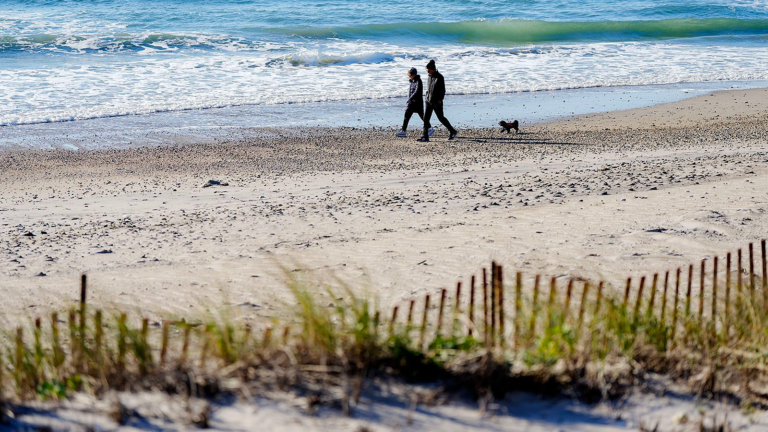Journey
So long as you are accumulating seaweed, you possibly can keep.

Simply in time for summer time trip, Rhode Island handed a brand new regulation this June making all seashores within the state public inside a sure distance from the water. It’s meant to make the shoreline extra accessible, however there are just a few caveats. So what does the brand new regulation say, and what does it imply for beachgoers?
Each R.I. seashore is now public — as much as 10 toes from the excessive tide line
In essence, the regulation says that the state’s seashores are public as much as 10 toes away from the excessive tide line. Even when the higher a part of the seashore is non-public — whether or not it’s a house, seashore membership, or enterprise — anybody can use the decrease half nearer to the ocean.
The excessive tide line, the regulation explains, is normally demarcated by a steady line of seaweed, small shells, oil, or scrum. If there is no such thing as a particles or residue on the seashore, the excessive tide line is the moist line on a sandy or rocky seashore.
‘Rights and privileges of the shore’
Precisely which actions are permitted within the newly public areas of otherwise-private seashores is up for debate. The regulation states that the general public can train its “rights and privileges of the shore” — a reference to the identical phrasing in Rhode Island’s structure, which protects actions “together with however not restricted to” fishing, gathering seaweed, leaving the shore to go for a swim, and passing alongside the shore.
Though the proper to, say, roll out a towel and sunbathe is probably not codified within the state structure, it might arguably fall underneath the “not restricted to” a part of that provision. Some non-public property homeowners desire a extra literal interpretation, although, and contend that the regulation protects solely the actions explicitly named within the state structure.
What’s undoubtedly not allowed is any sort of public use of personal facilities (akin to decks or seashore chairs). That is the place issues get thorny, as a result of in keeping with the regulation, beachgoers shouldn’t have the proper to entry the general public seashore by way of privately owned property.
A seashore membership proprietor, as an example, isn’t legally required to allow you to move throughout their a part of the seashore to get down under 10 toes of the excessive tide line. Realistically, this provision means many seashore areas will stay principally restricted, until they are often accessed by boat or by strolling alongside the strip of public seashore nearest to the ocean.
The regulation additionally makes an exception for personal seawalls on the water’s edge — just like the one in entrance of Taylor Swift’s Westerly property — which the general public isn’t allowed to entry even after they block the world inside 10 toes of the excessive tide line.
A authorized problem from beachside property homeowners
No sooner did the brand new regulation move than it was challenged by a federal lawsuit from the Rhode Island Affiliation of Coastal Taxpayers (RIACT), who say it “opens their residential life to the fixed presence of strangers, destroying privateness and elevating security considerations.”
RIACT is in search of an injunction to dam the regulation whereas they litigate their case. However Lawyer Basic Peter Neronha, who together with the Division of Environmental Administration and the Coastal Assets Administration Council is a defendant within the swimsuit, urged in a tweet that he’s unfazed by the group’s efforts.
“‘Get off my sand’?” he wrote. “Please.”
Publication Signup
Keep updated on all the most recent information from Boston.com